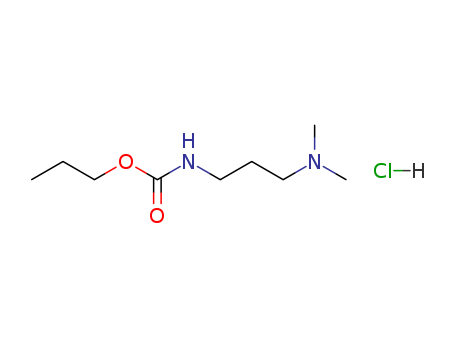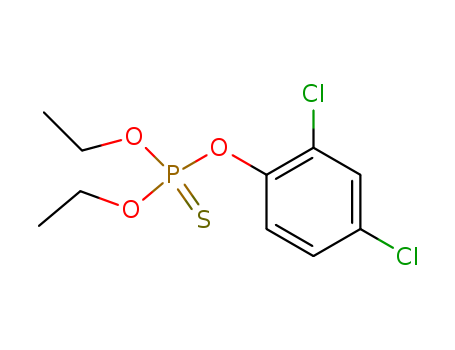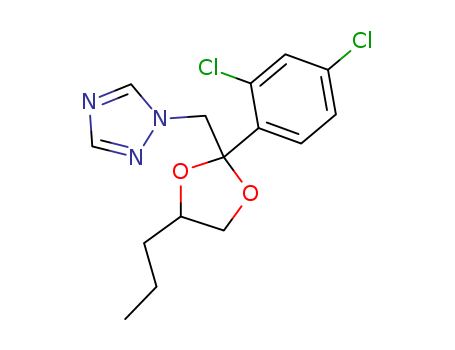Quick Details
- ProName: Propamocarb hydrochloride
- CasNo: 25606-41-1
- Molecular Formula: C9H20N2O2.HCl
- Appearance: Colourless, faintly aromatic, hygrosco...
- Application: fungicides
- PackAge: 200kg drum
- Purity: 98%
- LimitNum: 100 Kilogram
Superiority
Fungicide
NOMENCLATURE
propamocarb hydrochloride
IUPAC name propyl 3-(dimethylamino)propylcarbamate hydrochloride?
Chemical Abstracts name pro…
Details
Fungicide
NOMENCLATURE
propamocarb hydrochloride
IUPAC name propyl 3-(dimethylamino)propylcarbamate hydrochloride?
Chemical Abstracts name propyl [3-(dimethylamino)propyl]carbamate hydrochloride?
CAS RN [25606-41-1]? EEC no. 247-125-9? Development codes AE B066752 (AgrEvo); SN 66 752 (Schering); Zk 66752?
?
propamocarb
Common name propamocarb (BSI, E-ISO, ANSI); propamocarbe ((m) F-ISO)
IUPAC name propyl 3-(dimethylamino)propylcarbamate?
Chemical Abstracts name propyl [3-(dimethylamino)propyl]carbamate?
CAS RN [24579-73-5]? Development codes SN 39744 (Schering)?
?
PHYSICAL CHEMISTRY
propamocarb hydrochloride
Composition The aqueous concentrate contains 780 g/l propamocarb hydrochloride.? Mol. wt. 224.7? M.f. C9H21ClN2O2? Form Colourless, faintly aromatic, hygroscopic crystals.? M.p. 45-55 oC? V.p. 3.85 ? 10-2?mPa (20 °C)? KOW?logP = -2.6? Henry 8.65 ? 10-9?Pa m3?mol-1?(20 °C, calc.)? S.g./density 1.085 g/ml (20 °C, aqueous concentrate)? Solubility In water 1005 g/l (20 °C). In methanol 656, dichloromethane >626, acetone 560, ethyl acetate 4.34, toluene 0.14, hexane <0.01 (all in g/l, 20 °C).? Stability Stable to hydrolysis, to temperatures up to 400 oC, and to photolysis.?
?
propamocarb
Mol. wt. 188.3? M.f. C9H20N2O2? V.p. 730 mPa (25 °C)? KOW?logP = 0.84 (20 °C)? Henry 1.5 ? 10-4?Pa m3?mol-1?(25 °C)? Solubility In water >900 g/l (pH 7.0, 20 °C). In hexane >883, methanol >933, dichloromethane >937, toluene >852, acetone >921, ethyl acetate >856 (all in g/l, 20 °C).? pKa 9.5, strong base (K. Chamberlain et al., Pestic. Sci., 47, 265 (1996))?
?
COMMERCIALISATION
History Fungicide reported by E. A. Pieroh et al. (Meded. Fac. Landbouwwet. Rijksuniv. Gent, 1978, 43, 933). The hydrochloride introduced by Schering AG (now Aventis CropScience).? Patents DE 1567169; DE 1643040? Manufacturers Agriphar; Aventis
?
APPLICATIONS
Biochemistry Multi-site inhibitor.? Mode of action Systemic fungicide with protective action. Absorbed by the roots and leaves, and transported acropetally.?
?
propamocarb hydrochloride
Uses Specific control of phycomycetous diseases (Pythium, Phytophthora, Aphanomyces, Bremia, Peronospora, and Pseudoperonospora spp.). In particular, control of Pythium and Phytophthora spp. in vegetables, ornamentals, glasshouse tomatoes, glasshouse cucumbers, tulips, tobacco, and in forestry seedbeds; Pythium blight on turf; downy mildew on lettuce, cucurbits and cabbages; Phytophthora infestans in potatoes and tomatoes; Phytophthora cactorum on strawberries; etc. Applied to the soil, or used as a dip treatment (for bulbs and tubers) or seed treatment, and as a foliar spray in late-season applications.



 Premiumsupplier
Premiumsupplier 









